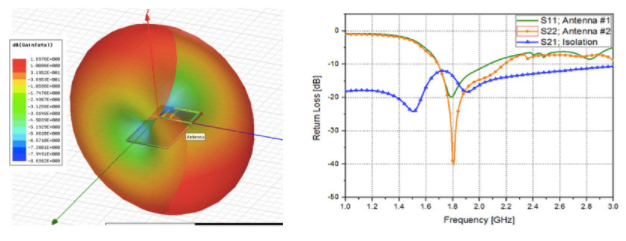Whether in the consumer, automotive, medical or industrial industries, the latest technology trend is to convert all wired interfaces to wireless interfaces. This wired-to-wireless interface transition provides greater flexibility, convenience, and global access, rather than regionally limited wired access. According to a new market research report, the market is expected to grow from 6.51 billion units in 2018 to 8.78 billion units by 2023, growing at a CAGR of 6.2% from 2018 to 2023.
Building a hardware product itself is a time-consuming and costly process. Designing wireless products requires proper antenna type specification selection, placement, and precautions to meet the intended RF measurements . Failure to do so increases time-to-market and development costs, and may require multiple spins. Adding this to the latest Iot applications requires products to be more compact and embedded with multiple RF solutions, which will add a new level of complexity to RF and product design and add a lot of risk to product design.
Routine antenna performance measurements on actual prototypes can partially address the limited number of RF antennas (one or two) and low product complexity. Antennas with multiple small size, high complexity and specific RF performance standards in a product do not follow this approach. In many cases, the chosen RF antenna solution does not work as expected, which can reduce time-to-market and increase development costs.
To overcome this obstacle, designers seek to optimize the product design process and development cost while considering the complexity of the RF solution. RF simulation is a solution that removes this additional risk burden.
RF simulation is huge and continues to grow with its simulation complexity and methodology considerations. There are various simulator software such as HFSS, CST, ADS etc. which should be used judiciously depending on the type of problem. In most cases, HFSS is chosen for RF antenna design/simulation for embedded solutions. Designers need to effectively integrate this RF antenna simulation into their product design methodologies, methodologies, and validation phases to get the most out of it.
The demands on product design are becoming more and more complex, and product designers/managers are confused about how to effectively add RF antenna designs during the product hardware development phase. New simulation details and data require new product design management techniques.
Fundamentally, RF antenna design/simulation validates product options and also helps select the correct operation as the product evolves in the design cycle. Thus, the link between hardware product design and RF antenna design shows how the RF design phase must be integrated into the product development cycle phase.

proof of concept
The Proof of Concept (POC) phase starts with the basic concept of the product without any mechanical model. The required details are the product use case, antenna requirements, estimated PCB size, major metal components (if any), material details and desired product size. Simulations are performed using simplified mechanical models, which will provide detailed information on feasible and infeasible algorithms. Later, only major obstacles can be identified at this stage, which will help product owners create better business cases and product specifications.
pre-simulation
After the POC phase is completed, the hardware requirements specification and system architecture are finalized. Pre-simulations are done using the latest/richer models designed by mechanical engineers. This stage may require multiple iterations until the end of the antenna solution. In addition, this phase will provide minimum distances, locations and orientations for different antenna solutions across multiple antenna products. This stage should ensure that the rest of the changes in the product do not affect the RF antenna solution. The pre-simulation stage is the main stage of the entire RF antenna simulation stage.
simulation
Once the schematic and layout design is complete, the simulation or virtual testing phase begins. By this time, the mechanical housing of the prototype will also be complete. Therefore, this simulation was performed on a fully functional/extremely detailed mechanical model. Accurate housing, mechanical component properties, and material details are required to obtain accurate details that contribute to more accurate RF simulation results. Additionally, it requires optimizing RF performance and testing for possible effects of nearby mechanical, metal, and PCB layout changes. Here, the accuracy of RF simulations depends on accurate and well-defined details that help understand and prepare for possible risks in the final product.

Once the prototype board is ready and start-up testing is completed, the verification phase begins. Although the simulation claims high accuracy, physical measurements are always required to verify the simulation results. There is also a need to rule out human error and provide correct simulation details. Additional filters added during the pre-simulation and simulation stages will need to be tuned during the validation stage for optimal performance. The validation phase of RF antenna measurements will fill the remaining gaps in RF antenna product design.
During this complete RF antenna simulation design phase, several parameters need to be considered and ensured that the designed/simulated RF antenna solution meets its requirements. Parameters are antenna type, antenna placement, orientation, antenna isolation when designing multiple antennas, return loss, VSWR, gain, bandwidth, radiation efficiency, effect of ground planning, effect of nearby components on the radiation pattern.
Integrating RF antenna design/simulation into hardware products as described above will help in designing complex RF antenna products in an efficient manner. It gradually reduces RF risk from the initial demand stage to avoid major barriers to later products. Product owners can make proactive decisions based on simulation results rather than actually taking risks.
